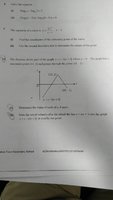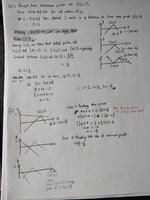Polynomial112233
New member
- Joined
- Jul 31, 2019
- Messages
- 6
As per attachment, question 10.
A=1/2
B=—6
C=2
I got these answers but have difficulties in writing them in proper presentation.
Pretty lost for part ii where they mention "state", because I cannot think of an easy way to get the ranges of m.
Thanks in advanced for the help!
A=1/2
B=—6
C=2
I got these answers but have difficulties in writing them in proper presentation.
Pretty lost for part ii where they mention "state", because I cannot think of an easy way to get the ranges of m.
Thanks in advanced for the help!


